The art of any breeding programme is to continue to develop, and certainly Michael Weinstein, who is at the heart of Psynergy Enterprise Developments, LLC, has done just that. From owning Aries Arabians with his father 50 years ago and being responsible for importing Menes from Russia to the United States, to having bred Atticus ENB, the stallion of the moment, there is little that Michael does not know about breeding Arabian horses. With his partners at Psynergy, Jean Edwards and Arturo Uribe, Michael continues to lead the way when it comes to breeding beautiful, yet functional, Arabian horses. In this detailed cover feature, we truly celebrate the breeders.
There can be few today who have not heard of Psynergy Enterprise Developments, LLC (Psynergy). Their stallion, the impressive Atticus ENB, now standing in Europe, is a true horse of the moment, having won a slew of championships in North America and Canada. Atticus ENB results from a breeding vision that began back in 1973, when Michael lived with his father, Herb, and sister, Lissa, in the Chicago suburbs. As founding partner of Psynergy, the story begins with him, some 50 years ago

Atticus ENB – our cover star. Credit Javan
Aries Arabians
“My dad, with a business partner, bought an old dairy farm in Lake Geneva, Wisconsin,” recalls Michael. “It was a resort area, where people would head from the suburbs of Chicago for the weekend. The lake was beautiful, and it was a place with a lot of history, with old Chicago families such as the Wrigleys there, who also owned Arabian horses. We would spend weekends and summers here. The lake was beautiful, and we spent so much time on it and in it.
“When we were kids, we had Quarter horses and riding horses, but we always had an interest in Arabians, so when we bought the farm, we bought a few Arabian mares. That was the start of Aries Arabians.”
The journey continued when, as his dad was on his way home, he passed a billboard advertising Daalda Arabians, owned by David and Alice Hoffman. “They were big breeders, with over 150 horses, many of which were Raffles (Skowronek x Rifala) bred mares, and they had added Polish lines to this. They were having a production sale, and we went along, subsequently buying a couple of Raffles-bred mares.”

Edjora. Credit Judith
The two mares purchased from Daalda Arabians included the mares Snazzy (Azy x Naheefe) and Daalda Hi Fashion (Charaff x Daalda Charala). The following year, in 1974, Herb and Michael went to the US Nationals with Dr David Hoffman, who introduced the family to the show scene. “It was huge, going from having a few horses at home and then attending the US Nationals,” recalls Michael. “At that time, the show included a National Sale, and the quality was phenomenal. We were exposed to these amazing Arabian horses, such as daughters of Naborr (Negatiw x Lagonda) and his son Aramus (ex Amneris by Amurath Sahib). I noticed Alberta Rosemagic, a beautiful three-year-old daughter of Gwalior (Naborr x Gwadiana) and out of Pandorah (Naborr x Miss Dior), and dad purchased her. I became enchanted with the Naborr horses, and Alberta Rosemagic, who was double Naborr, was our first introduction to the amazing descendants of this stallion.
“The pure Polish mare Edjora (Exelsjor x Edessa) sold through that sale to Tom Chauncy, who had purchased Naborr with Wayne Newton in 1969. I noticed her too, as her quality was unmistakable, and she would go on to show at the Nationals with Bruce Howard, making the finals in both halter and park while seven months in foal. What a mare!”
That same year, Mike and Herb met Ted and Christine Gibson of Heritage Hills Arabians at their Lake Geneva home. “I was in high school at the time, and they invited us to go to Scottsdale with them when I was 15,” explains Michael. “It was my first time there, and it was incredible. We bought horses through the Gibsons, and they were the true start of our journey. It changed everything.

Michael and Cindy at the Tersk Stud in Russia. Credit Weinstein Archives
“The Gibsons bred some great Arabian horses, and they were very knowledgeable. They increased our interest in the Polish horses and the great stallion, Bask (Witraz x Balalajka). We moved from domestic lines to Polish, which was the trend at the time, and Aries Arabians took off.”
In 1977, Michael and Herb went to Poland with Dan Doesell, a popular Polish breeder in the States. There, Michael purchased Eurowizja (Czermosz x Eufonia). Not long after, they went to Sweden and developed a close relationship with many breeders there, including Jörgen and Susanne Frederiksen, who at the time ran Blommeröd Stud. “We ended up buying horses through them,” explains Michael. “We kept a small programme at Blommeröd, and we bred many times to their chief sire, Probat (Pohaniec x Borexia).”
Michael says that while they bred some great horses in Sweden, including using different Polish pedigrees such as Exelsjor (Aquinor x Eleonora), they were also slowly putting together a breeding programme in the United States.
Now aged 23, Mike and his father had become friends with Gerry White of Lasma Arabians, and Michael and his dad were offered a large package of Polish horses and Bask daughters in 1981. “We had already bred to Bask, and Gerry put together a package as he knew we were interested in buying quality Arabian mares. The Lasma package included many high quality mares, including the Bask daughter Dancing Heart (ex Habina by Hallany Mistanny). It also included Edjora and her two-year-old daughter, Kajora (by Kaborr by Naborr). Kajora would go on to be US National Champion Mare in 1982, as well as become world-famous for producing one of the most influential stallions of all time, Gazal al Shaqab (by Anaza el Farid by Ruminaja Ali) for Al Shaqab Stud in Qatar.

Menes with Director Alexander Ponomarev in Russia. Credit Weinstein Archives
“In those days, we used our place at Lake Geneva to entertain people, and we put together Aries Associates to introduce family and friends to the wonder of the Arabian horse, and we bought this package. Even then, a good mare was over $100,000, and one mare in this group was over $500,000. Today, people are less likely to spend that much on a broodmare, but then, it was commonplace.”
Michael was in charge of all breeding, showing, and marketing decisions for the mares purchased. “We had great success with this group of horses and felt that we needed to get our own stallion” continues Michael. “Having looked around, the newly imported Russian stallions such as Muscat (Salon x Malpia), Nariadni (Nabeg x Nariadnaia), and Salon (Negatiw x Sonata) really impressed us. We had a connection in Russia, and we had heard great things about a stallion called Menes by Nabeg (Arax x Nomenklatura) and out of Metropolia (Priboj x Mammona). Friends had visited Tersk State Stud, and they all talked about this one incredible stallion who was siring amazing foals. We were told that he wasn’t for sale, but I felt strongly, after studying his pedigree, that Menes would be ideal for our mares, and we decided to go to Russia and see him. We knew that Russian horses, especially the Nabeg line, could contribute a shorter head with more width between the eyes, with the eyes set out farther on the sides of the head. The Nabeg line also produced more length of leg and shorter backs. With the elegance, long necks, and athletic ability our Polish mares had, this cross could work well with our mares, especially coupled with Menes’ classic Polish pedigree. At that time, Aswan (Nazeer x Yosreia) blood wasn’t as popular with the Polish breeders, everything was about pure Polish bloodlines – and so Menes would be more attractive to Polish breeders. We had heard that Menes was producing beautiful faces and big eyes and, as I was trying to breed a contemporary Polish horse with a shorter head, bigger eye, and so on, Menes sounded like he could be something really exciting for our programme.”
Herb had a long-time relationship with the Chilewich Corporation, as Chilewich provided hides for the Weinstein’s leather tanning business. Simon Chilewich, the first American to have an office in Moscow and who became the middleman for the Soviet Union, purchasing commodities around the world, was able to get them through the Iron Curtain. “We founded Fidelis International and, through Simon who was part of the group along with Bruce Bowers, we got our foot in the door. We flew to Russia with judge Cindy Reich, who was our breeding manager, and flew down to Tersk Stud.
“After showing us a number of stallions, they brought Menes out last, wearing the heavy, gold show halter Tersk reserved for their chief sires. I knew immediately that our search had ended. Menes carried himself like a king and he was very different from the rest of the stallions presented that day. He was more the kind of horse that you would expect to see in Poland, not the foothills of the Caucasus Mountain range in Russia. He was bay, with very little white, just four little white socks –very similar to Bask. Menes had a shorter head and big eyes, and the absence of the Aswan line made his pedigree stand out.

Menes. Credit Scott Trees
“Menes just took my breath away, he was different from a lot of the horses coming from Russia. He was one of the typiest stallions I had seen. He was so beautiful and so classic, with his large, dark eyes, short masculine head, overall balance, and length of leg. Menes also had a smooth body, short back, and great tail carriage. For me, he was all Polish – a Russian horse with classical Polish breeding. By buying Menes, we weren’t really going away from our Polish roots. He had a lot more type, was stronger bodied, and had bigger eyes, and we had high hopes that Menes would cross well with our mares.
“Menes had sired two foal crops at Tersk and as we looked at the foals, we could see he had passed on these qualities to his foals.
“It is not easy buying horses from Russia. It took at least 18 months from getting Tersk to agree to sell him to us, to Menes arriving in America. He first travelled to Holland by boat from Russia, where he was treated for Piroplasmosis, a parasite that lives in the red blood cells of affected horses. The treatment was risky – you had to kill the parasite in the blood cells without killing the horse or leaving them sterile – and once the levels of Piroplasmosis disappeared, Menes was able to make the next stage of his journey, to his new home in the US, where he arrived with a lot of fanfare and to a lot of interest.

Polonia with the Menes daughter, Parada
“By the time Menes finally arrived with us, I feel he was a year or so too late. He then had fertility issues the first season he arrived as a result of the Piroplasmosis treatment and by the time he was in his stride as a stallion, the tax laws had changed in the States and people were breeding less. Menes died in 2001, aged 24, while covering a mare. His legacy remains strong though, across Europe as well as here in the US, and within the second phase of my breeding programme.”
Despite Michael’s concerns that Menes had arrived too late, he had some standout foals for Aries Associates including, from his first foal crop, the 1986 mare Parada, out of Polonia (Gwalior x Bint Pensja), one of their first Polish purchases, who was Junior Female Champion in Scottsdale as well as Star World Grand Champion Mare while a yearling, beating all the senior horses which was remarkable. Parada was later named US National Reserve Champion Futurity Mare, moments that brought a tremendous amount of satisfaction for Michael, especially after the long struggle for the acquisition of Menes.
In Europe, Sax Arabians used Menes to great effect, developing their programme around this Russian giant with notable daughters including Menascha (ex Nascha by Neman), dam of European Triple Crown winner Essteema (by Essteem by Fame VF). Tersk Holland Stud, meanwhile, bred the Horse of the Century, Balaton (ex Panagia by Aswan), whose titles included European Champion Stallion.

Parada. Credit Rolf Hess
Other progeny of note in those early years included Emperator (ex Ellavia by Stargard), who would go on to be US National Champion Futurity Colt, Scottsdale Reserve Senior Grand Champion Stallion, and World Champion Stallion. Another World Champion Menes son was Medalj (ex Sadza by Rusazcie), bred in Sweden by AB Broderna Bourghardt.
“The selling of Menes marked the end of our family horse business,” explains Michael. “My dad wasn’t able to continue anymore and after he passed away, I moved to California in January 1996. There, I started a new career working in mental health. I went to work for Mustafa Sabankaya in San Jose, where he ran his own facility, and I worked there for eight years.”

Emperator
In 2004, Michael left and later that year, would go on to set up his own mental health facilities in California, Psynergy Programs, Inc, opening his own facility in 2005. It was from there that life would go full circle, taking him back to Arabian horses via a great-grandson of Menes.
For Part II in this feature, please click here.
For more information on Psynergy, click here.
This feature is the cover story for The Arabian Breeders’ Magazine Volume VII Special Edition – buy your copy here.


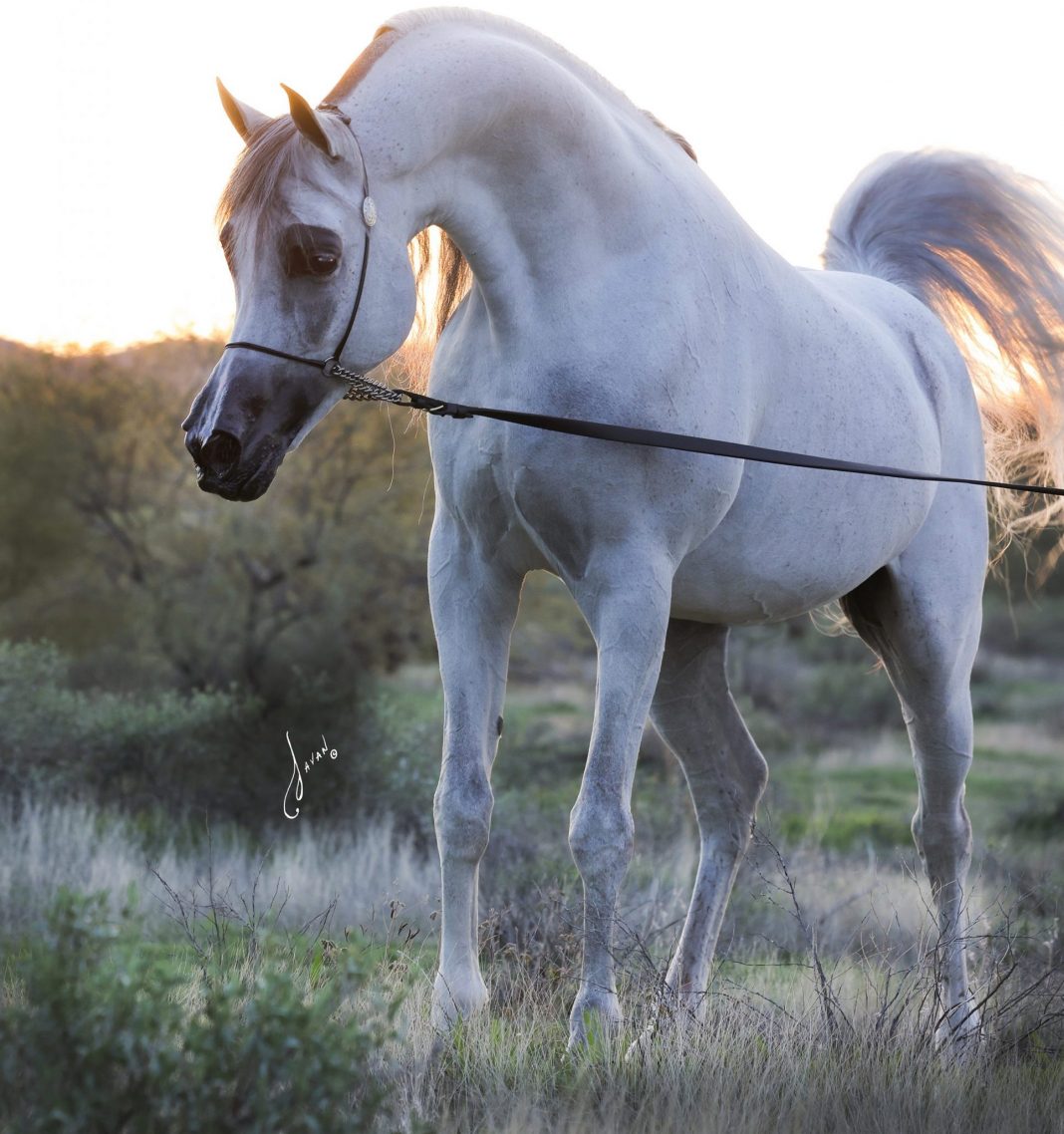
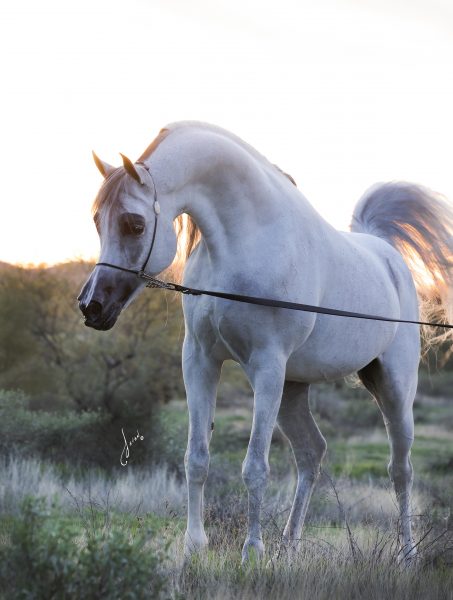
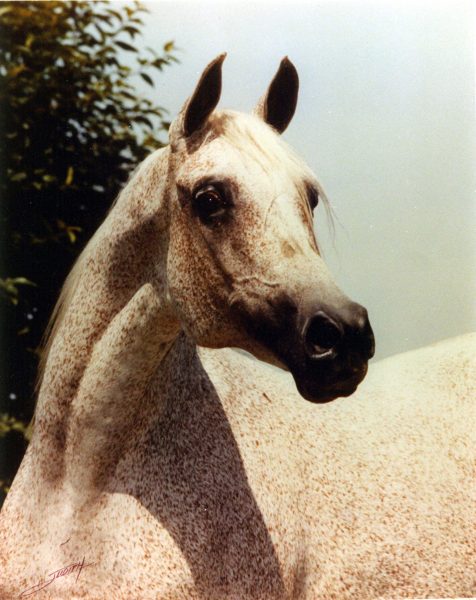
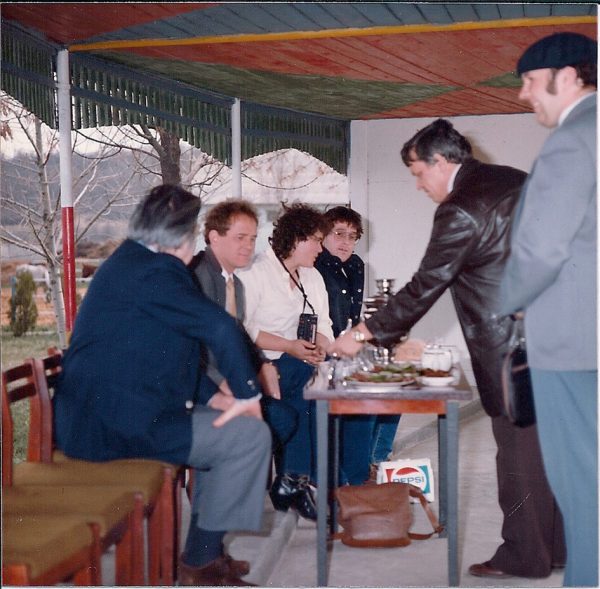
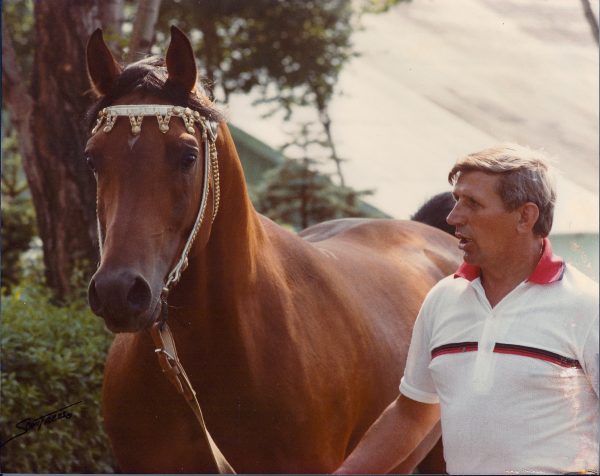
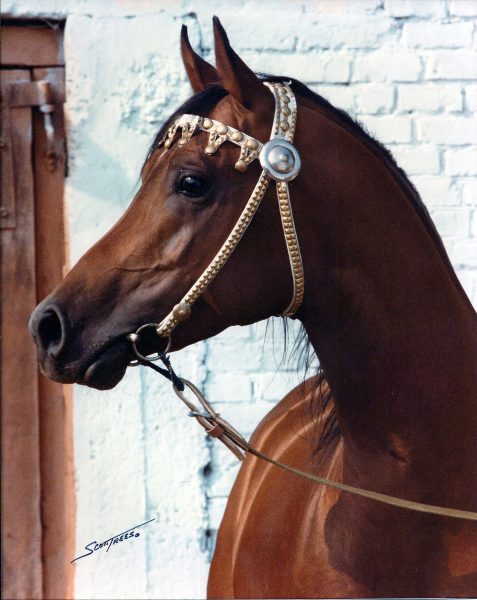
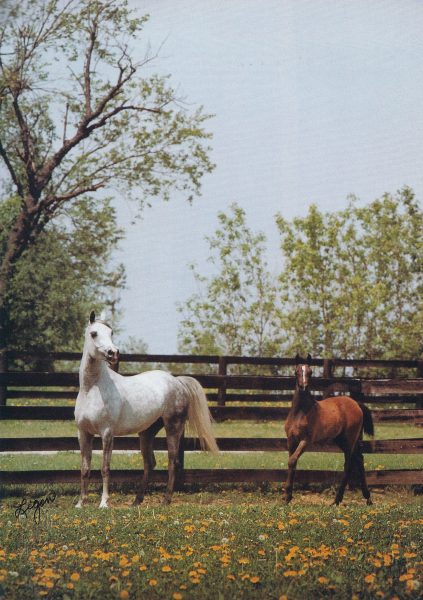
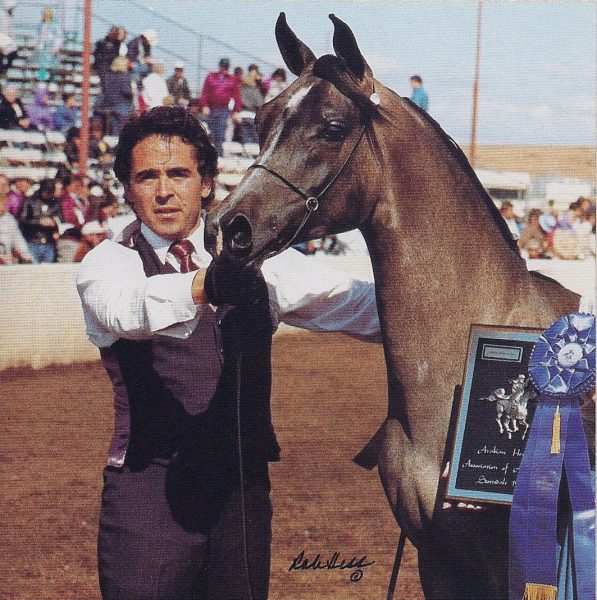
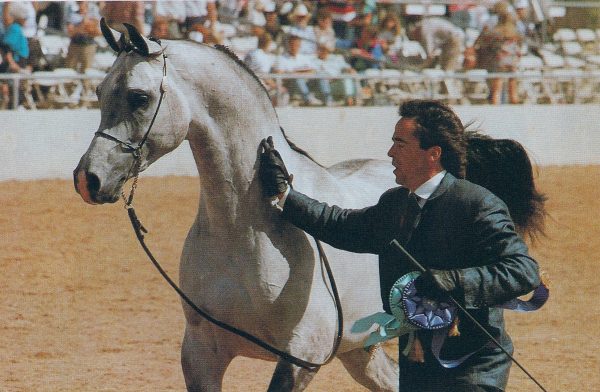
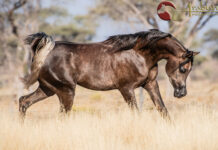
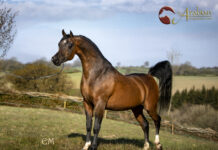
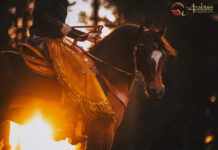






[…] Part I focuses on the early days of Aries Arabians, consisting of Michael Weinstein and his father, Herb. Theirs is a story that began in the 1970s, culminating in importing the iconic stallion Menes (Nabeg x Metropolia) from Russia to the United States. […]